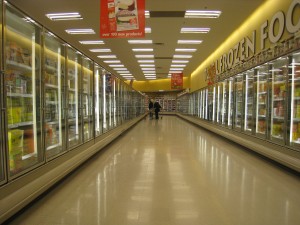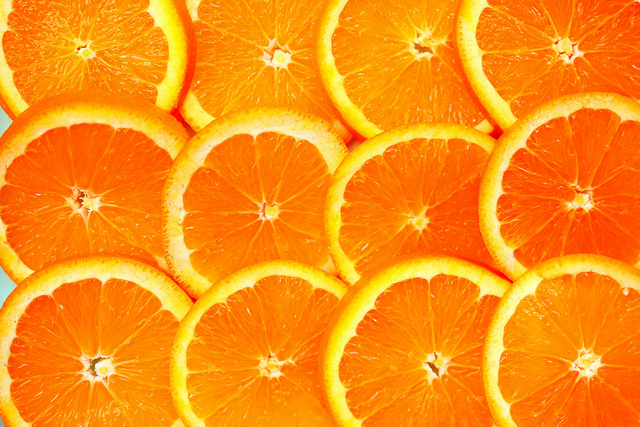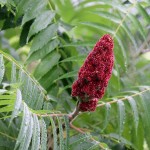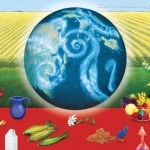Food ideas
Earlier this year, the USDA approved the planting of genetically modified alfalfa—that normally nutrient-rich sprout loved by healthy types across the land. Canada responded in lackluster fashion by promptly dragging its heels in a proposed ban of the Roundup Ready Herbicide tolerant product created in the labs at Monsanto.
Can anyone tell me why we need to make alfalfa GM? Last time I checked, it was a “health food”, eaten by health food lovers –- the same people who tend to avoid genetically modified anything because of the risks involved.
In response to our country’s lack of response, the Canadian Organic Growers signed legal action against Monsanto in March. The lawsuit is led by the Public Patent Foundation (PUBPAT) based in New York. PUBPAT is known for standing up to corporate greed against patents that are not in the public interest.
This particular suit is against Monsanto’s practice of defending its patent rights through legal action against farmers.
Any farmer who has the audacity of having the wind or wildlife (and their droppings) transfer GM seeds onto their land can face fines of up to $200 per acre.
The case against Monsanto rests on four main points:
1. that Monsanto’s GM seed patents are invalid for a variety of reasons, including the facts that they do not meet the tests of novelty and of usefulness
2. that Monsanto’s GM seed patents cannot be infringed if the plaintiffs’ fields become contaminated through no fault of their own
3. that Monsanto’s GM seed patents are unenforceable
4. and that Monsanto would not be entitled to any remedy against the plaintiffs
Monsanto responded by calling the lawsuit a publicity stunt, and has filed a letter asking the court in New York to dismiss the case. If this is denied, they’ve asked to move the case to a “friendlier” court in St. Louis, where Monsanto is located.
Last month, the Monsanto was granted permission to file a motion to dismiss the case. PUBNAT one month to file an opposition to Monsanto’s motion to dismiss.
Feels down to the wire. And depressing. And high time to start growing our own sprouts at home, or getting them from some reliable local growers like Kind Organics.
If you can, please support COG’s campaign.
Can’t afford to go to Europe this summer? Not to worry, Canada is bringing Europe here.
Canada and the European Union have reached an agreement on an equivalency in organic products. The agreement comes after almost four years of negotiations involving a long review of each other’s rules for organic food production and control systems.
The idea is to increase trade on both sides of the pond, no to mention boost Canada’s organic sector.
Suppliers can now import and export certified organic products between Canada and the EU without the need for additional certification. This means new markets for organic farmers and much less paperwork.
This is a good thing, right? More organics means more land is being used to produce food in a responsible and sustainable way. So yes, this is good. But I submit that local organic is still the way to go when possible.
Our Canadian market is already inundated with US-based organic products that often mirror mainstream food’s infrastructure in its packaging and transportation practices. Even non-organic local food, when in season, with its absent or minimal packaging and small carbon footprint, makes a better argument for sustainability.
So yes, buy EU organic. Let’s have a healthy, competitive organic market. But don’t neglect your local market — because if you want tasty, healthy food, fresh is still best.
I am tired of people complaining about the cost of food. I know, I sound like a terrible human being. Yes, prices are going up, and of course food has to be affordable. But we are pretty spoiled here in North America compared to the rest of the world when it comes to many things, and the price of food is no exception.
Take a minute to consider how much (or little) of our income that we actually spend on food compared to other nations:
• USA 9.6%
• UK 11%
• Japan 17%
• South Africa 27%
• India 53%
If you’re in North America, you’re spending less than 10% of your income on food. This figure used to be much higher. But believe it or not, it has been steadily decreasing over the past 90 years.
And now, after all this time, the landscape is changing.
The UN Food and Agriculture Organization (FAO), led by newly appointed Jose Graziano da Silva, says the increase is due to bad weather (droughts and floods in food producing areas), high demand, and a switch to higher protein diets. There was much talk about food shortages in 2009, and in February 2011, the FAO Food Price Index reached an all time high — this is a measure of the monthly change in international food commodity prices.
Mr. Graziona says prices are going to stay high — and volatile. And volatily, he says, is worse than high prices, because farmers are hesitant to invest in agriculture for fear of not making their return. Graziano partly blames this volatility on the “financialization” of key commodities by financial markets, i.e. speculation.
The price of food in Canada is rising, but we will not likely feel it until the end of the year, when according to the Globe & Mail — the rising cost of wheat, soy, corn, sugar and vegetable oil will have trickled down and be reflected in supermarket prices.
The UN points the finger for all this at the rising cost of crude oil. While it’s true the cost of wheat has doubled, the cost of wheat makes up only 15 cents of the price of a loaf of bread. The rest comes from processing, packaging, overhead and transportation.
Rising fuel prices are much more of a factor. 1L gasoline is up by 20% from last year, and the price of diesel, used by most transport trucks, is up 30% from last year. This will have a major trickle down effect on… well, everything.
So what can you do to minimize the strain? There are different ideas out there floating around. Start growing your own food during the warmer months to reduce food bills. Buy as local as you can to minimize the distance the food must travel. Buy food that has as little processing and refining as possible — to avoid the costs that each of these stages adds on.
One piece of advice was deceptively simple and made me laugh:
Use all the plant. Save the bones for soup. Freeze and can and jam and pickle the food you do have to stretch it as far as it will go — because the current lifestyle to which we have become accustomed may well be changing.
We’re pretty disappointed that members of the municipal government in our hometown, Toronto, are pushing to step away from their buy local food policy. It seems very shortsighted to curtail a policy that is good for the health of our citizens, good for the planet, and helps local food producers – simply to “get the biggest bang for our buck”.
If you’d like to send a message to City Hall on this issue, the good folks at Toronto Environmental Alliance have put a petition online you can sign by clicking here.
In a follow-up article, the Toronto Star reports that the food service company that once fed 75 day-care and Montessori schools supposed organic, kosher and halal meals has shut its doors.
It’s all very mysterious.
Whole Green Kids somehow managed to pull a fast one on schools and parents of children with allergies, and who follow faith-based food preparation traditions.
The provider of so-called ‘premium’ meals has apparently been moving shop over the past few months to avoid paying kitchen rent. Meanwhile the owner, Susan Blouin, lives in a $2 million home and drives a Porsche. Really? I mean really??
It’s actually all very disturbing.
I have a lot of faith in the good food movement. I pay extra for organic. I eat local. I push the ideal and do my best to convert friends. I also occasionally work in catering, and have great respect for reputable companies like Sublime Catering and Real Food for Real Kids.
And I think there is great potential for more good food to be available in our everyday, non-elite lives – because the general population is becoming more food-literate, consumers more savvy, and deadly e-coli outbreaks remind us we have to be vigilant about the quality of our food.
But this company is casting a dark cloud on my parade. And it pisses me off.
If you’re concerned about the quality of food being provided to your children, I encourage you to check out the claims made by the food service or catering company you use. Don’t assume they’re pulling a fast on you; as I see it, Whole Green Kids is the exception, not the rule. But you have every right to feel comfortable about the food someone else is selling you.
Written by Melanie Kozlan, Four Green Steps.com
Finding yourself inexplicably gloomy or a little depressed from the miserable weather? Feeling down might be an indicator that you’re missing out on essential mood-boosting nutrients. Here’s a list of healthy foods proven to make you feel instantly happier:
Tryptophan-Rich Foods
Tryptophan is one of the ten essential amino acids and helps our brains produce serotonin, which makes us feel relaxed and in control. Food that has tryptophan can help fight depression, insomnia and anxiety. Foods containing tryptophan include:
- Milk (Vegan? Drink hemp milk- hemp seeds contain all ten essential amino acids!)
- Cashews
- Sunflower Seeds
- Pumpkin Seeds
- Bananas
- Avocados
*For the full effect of tryptophan it is best to eat these items uncooked.
Fruits rich in Antioxidants & Vitamin C
Fruit like blueberries and oranges are known to contain a high amount of antioxidants and vitamin C, both are helpful for reducing feelings of stress.
Vegetables Rich in Antioxidants & Folic Acid
Spinach, broccoli and kale are full of folic acid which help produce serotonin (just like tryptophan does).
Chocolate
Contains anadamine, a chemical naturally found in the brain that is know to brighten our mood and make us feel happier. Enjoy in moderation as the sugar in chocolate might contribute to other issues.
Nuts
Nuts are rich in minerals, protein and omega-3 fats. Omega-3 is not only good for both your heart and brain, large doses of it have been used to treat clinical depression. Nuts also contain vitamin E, an antioxidant that combats stress. Brazilian nuts such as cashews, almonds and pistachios have been proven to lower blood pressure and calm our nervous system.
Melanie Kozlan is the Senior Content Director of Four Green Steps
– your one-stop destination for all things green! Four Green Steps is home to the World’s largest Green marketplace, offering an eco-friendly alternative to virtually everything as well as a free ecological curriculum used by students from all around the globe.
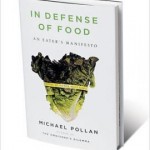
In Defense of Food – An Eater’s Manifesto
By Michael Pollan
It’s hard to know where to start with this book review. Pollan touches on so much; the term “manifesto” in the title is no understatement. And yet throughout the twists and turns that explore our perceptions of and our relation to food, Pollan always remains squarely focused on his one, simple, yet surprisingly challenging credo:
Eat food. Not too much. Mostly plants.
Pollan begins with the demise of Mom as controller, boss and decision-maker over the evening meal. When we as a society replaced Mom’s authority over our food choices with advice from scientists and food marketers, we all began to suffer. After all, who really had our best interest at heart?
For decades now, big agriculture has focused on growing produce with synthetic chemicals and raising livestock on pharmaceuticals. The goal is return, quantity and profit. The side effect of this is that our food has been transformed from something we could identify (…grape, …cow) and eat without worry, to the confusingly refined, enriched and modified cacophony of chemicals that we call food today.
To help us understand these food-like substances, we have turned to the professionals for guidance—government food guides, dieticians, nutritionists, trainers and celebrities (who learned from nutritionists and trainers). And so we learned about nutrients and micronutrients, and now we worry over vitamin D, anti-oxidants and essential fatty acids.
Pollan uses the term nutritionism to describe this focus on nutrients and our tendency to break our food down into its parts. He asks his readers to return to seeing food as something that is whole in itself, not a series of parts. Eat an apple not because it contains vitamin C and a nice mix of soluble and insoluble fibre, but because apples are good for you and we know this from millennia of eating them.
With food science in its infancy, Pollan suggest we revert our trust to our traditional food knowledge. The eating habits of our grandparents and ancestors allowed them to survive because the methods were tried and true. The diversity of traditional diets (Greek, French, Japanese, Indian, Mexican, whatever) is proof it’s possible to nourish ourselves from a huge range of different foods—as long as they are food.
In the west, our current dietary focus on processed corn, wheat and soy is a direct result of what’s easy and fast to grow, ship and store. The apparent focus of our agricultural system on quantity over quality, and the goal to produce as many calories per acre as possible, regardless of nutritional value, is leading us down the garden path and straight into the arms of our Western diseases: obesity, diabetes, hypertension, and heart disease.
Instead of chasing elusive super foods to cure our ills, Pollan asks us to re-visit our perception of one of the most basic necessities of life. Is more necessarily better? Are new scientific discoveries more reliable than traditional knowledge? Who really should be deciding what goes into your stomach?
This is, needless to say, a must read.
I’m beginning to realize there is food all around us.
Wild carrots. Wild leeks. Dandelions (of course). Bergamot. Cattails. Wild strawberries. Ostrich fiddle heads. The list goes on.
I had the pleasure of taking a wild edibles* class at Humber College last weekend. It doesn’t get more local than this – just walking around a field or wood, seeing what you find growing there naturally and eating it.
Of course, exactly what we consumed was closely guided by Dave Arama of WSC Survival School, who teaches the class.
The surprising thing was how delicious some of these foraged foods were! I am not kidding. The young needles of the tamarack tree, eaten as a type of candy by native peoples, had me leaving the group and going back for seconds. As for the leaves of the dogtooth violet, I was going for thirds and fourths.
One of my favourite trees, the staghorn sumac, has edible berries that you can eat (similar to a pomegranate, but fuzzy) or make into a type of lemonade (sumac-ade, I suppose).
It was an eye-opener. The tricky part is knowing how to distinguish between your tasty edibles and the poisonous look alikes. For that you either need to commit to the learnin’ or have an expert with you at your side.
Thanks David! It was fun. I’m looking at my surroundings a little differently now and looking forward to the next course on June 4!
*Course title: Edible Plants, An Introduction
A great talk on building healthier restaurants from December 2010.
A film by Deborah Koons Garcia, 2004 (Lily Films)
5 years old but still relevant.
I just saw The Future of Food (2004), a documentary film by Deborah Koons Garcia. This is a noteworthy film from the early days of GMO awareness in the United States. It explores the quiet introduction of GM (genetically modified) foods into our food system. Focusing on the story of BT corn, canola and soy, this interesting little film explores on the plight of the small family farmer vs the likes of Monsanto Inc. We meet Percy Schmeiser, of Saskatchewan, and Rodney Nelson, of North Dakota, two farmers who had the audacity of having Monsanto patented GM seeds blow onto their fields. Their stories are shocking and reveal the pervasiveness of Monsanto’s tentacled reach into the FDA, government policy and legal system.
If you haven’t seen it, definitely worth a watch

